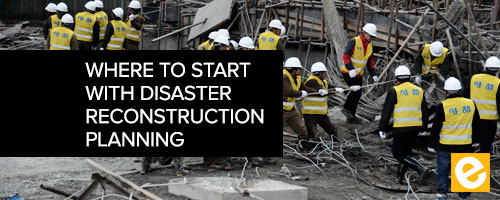
Where to Start with Disaster Reconstruction Planning
Where to Start with Disaster Reconstruction Planning
Our hearts and prayers go to our family members and everyone impacted by the devastation brought on by Hurricane’s Harvey and Irma! These events mark the first time two Atlantic Category 4 U.S. landfalls have occurred in the same year.
When disaster strikes, it can be hard to determine where to start with reconstruction. From earthquakes to massive floods, these events can cause enormous damage to buildings and infrastructure. If you work in the construction industry, you are expected to be there to plan and rebuild in the wake of a disaster.
Table of Contents
It’s always better to have a plan in place before a disaster occurs. Below I will go over where to start with disaster reconstruction planning.
1. Develop an action plan for different types of disasters – If you are in an area prone to earthquakes, you would want to ensure that there is proper insurance coverage.
2. Make a communication plan – This will help residents, employees, and vendors understand how to communicate with management if disaster hits.
3. Keep copies of critical documents – Make sure that you have extra copies of your insurance policies and other critical documents. Store these in a secure area so that you can access them post disaster.
4. Familiarize everyone with the plan – You want to make sure everyone has gone over reconstruction procedures before an actual disaster occurs.
So, a disaster has happened. What now?
Assess!
First and foremost, you must understand the type and scale of damages brought on by the disaster. Understanding and assessing will help you determine what supplies and manpower you will need. Immediately after a disaster, you should perform a preliminary assessment quickly. Later on, you can go back and perform a more thorough assessment.
When you are assessing the damage from a disaster, checklists and worksheets can help you create a comprehensive and standardized sheet of key information. Some important things to take note of include lost and damaged inventory.
Because of potential safety hazards, make sure that you contact all employees, suppliers, contractors, and clients. You will want to give them a rough estimate of when they can expect to be back. To further ensure safety, secure the building while reconstruction and repairs are being made.
Conclusion
While no one wants to imagine a disaster happening to them, planning can ease the recovery process if it does happen. Floods, fires, and earthquakes can happen anywhere, so start planning! If disaster does hit, you’ll be glad you did.
Sources:
The United Nations for Disaster Risk Reduction
The Planning Process – FEMA.gov